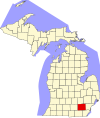
The Frederick C. Robie House is a U.S. National Historic Landmark now on the campus of the University of Chicago in the South Side community area of Hyde Park in Chicago, Illinois. Built between 1909 and 1910, the building was designed as a single family home by architect Frank Lloyd Wright. It is considered perhaps the finest example of Prairie School, the first architectural style considered uniquely American.

The Breakers is a Gilded Age mansion located at 44 Ochre Point Avenue, Newport, Rhode Island, US. It was built between 1893 and 1895 as a summer residence for Cornelius Vanderbilt II, a member of the wealthy Vanderbilt family.
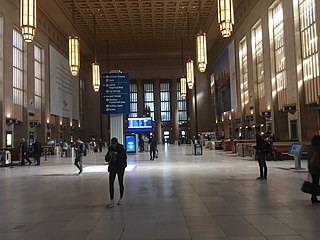
Interior design is the art and science of enhancing the interior of a building to achieve a healthier and more aesthetically pleasing environment for the people using the space. With a keen eye for detail and a creative flair, an interior designer is someone who plans, researches, coordinates, and manages such enhancement projects. Interior design is a multifaceted profession that includes conceptual development, space planning, site inspections, programming, research, communicating with the stakeholders of a project, construction management, and execution of the design.
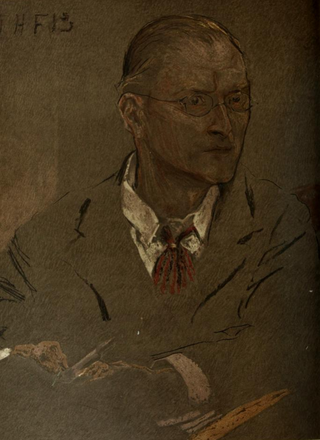
Charles Francis Annesley Voysey was an English architect and furniture and textile designer. Voysey's early work was as a designer of wallpapers, fabrics and furnishings in a Arts and Crafts style and he made important contribution to the Modern Style, and was recognized by the seminal The Studio magazine. He is renowned as the architect of several country houses.

Tower Plaza is a high-rise condominium building in Ann Arbor, Michigan, located at 555 East William Street. The building was first proposed in 1965, and opened in 1969. It stands at 26 stories. The antenna stands at 292 feet tall and the roof is 267 feet (81 m) tall. It was designed in the international style of architecture, primarily using concrete and glass. Originally a residential apartment building, it was converted to individually-owned condominiums in 1987. Tower Plaza also has the most buttons of any elevator in Ann Arbor.
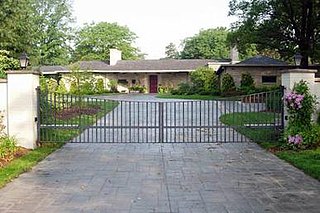
The Michigan Governor's Mansion and summer residence are located in the U.S. state of Michigan.
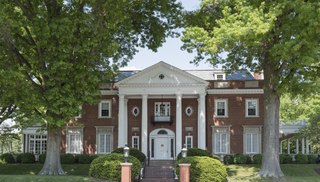
The West Virginia Governor's Mansion is a historic residence located next to the Kanawha River in Charleston, West Virginia and is the official residence of the governor of West Virginia.
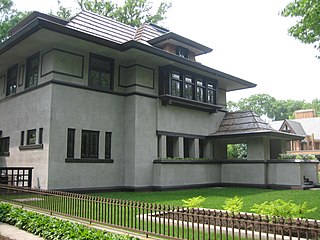
The Edward R. Hills House, also known as the Hills–DeCaro House, is a residence located at 313 Forest Avenue in the Chicago suburb of Oak Park, Illinois. It is most notable for a 1906 remodel by architect Frank Lloyd Wright in his signature Prairie style. The Hills–DeCaro House represents the melding of two distinct phases in Wright's career; it contains many elements of both the Prairie style and the designs with which Wright experimented throughout the 1890s. The house is listed as a contributing property to a federal historic district on the U.S. National Register of Historic Places and is a local Oak Park Landmark.

The Gerald B. and Beverley Tonkens House, also known as the Tonkens House, is a single story private residence designed by American architect Frank Lloyd Wright in 1954. The house was commissioned by Gerald B. Tonkens and his first wife Rosalie. It is located in Amberley Village, a village in Hamilton County, Ohio.

The Edsel and Eleanor Ford House is a mansion located at 1100 Lake Shore Drive in Grosse Pointe Shores, northeast of Detroit, Michigan; it stands on the site known as "Gaukler Point", on the shore of Lake St. Clair. The house became the new residence of the Edsel and Eleanor Ford family in 1928. Edsel Ford was the son of Henry Ford and an executive at Ford Motor Company. The estate's buildings were designed by architect Albert Kahn, its site plan and gardens by renowned landscape designer Jens Jensen. The property was listed on the National Register of Historic Places in 1979, and was designated a National Historic Landmark in 2016.

The Harvey P. Sutton House, also known as the H.P. Sutton House, is a six-bedroom, 4,000-square-foot (370 m2) Frank Lloyd Wright designed Prairie School home at 602 Norris Avenue in McCook, Nebraska. Although the house is known by her husband's name, Eliza Sutton was the driving force behind the commissioning of Wright for the design in 1905–1907 and the construction of the house in 1907–1908.

The Charles J. and Ingrid V. (Frendberg) Koebel House is a private house located at 203 Cloverly Road in Grosse Pointe Farms. It was listed on the National Register of Historic Places in 2009.

The Russian Village District comprises 15 folk architecture style houses and was built by Konstanty ("Steve") Stys, a Polish immigrant, and others during the Great Depression. It is located at the intersection of South Mills Avenue and East Cucamonga Avenue in Claremont, California. Although the street addresses are in Claremont, portions of many of the parcels in the district lie within the city of Montclair in San Bernardino County. The historic district was listed in the National Register of Historic Places in 1978.

The Tivadar and Dorothy Balogh House is a private house located at 49800 Joy Road in Plymouth Township, Michigan. It was listed on the National Register of Historic Places in 2013.
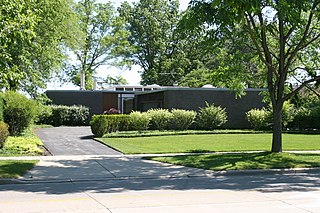
The Dr. Robert Hohf House is an International Style residence near Kenilworth, Illinois, United States. Built in 1957, it was designed by George Fred Keck and William Keck, Architects, in collaboration with Evanston Hospital surgeon Dr. Robert Hohf. It is considered a particularly fine example of post-World War II architecture around Kenilworth.

Hugh Tallman Keyes was a noted early to mid-20th-century American architect.
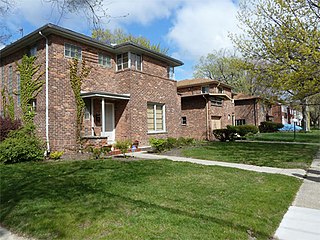
The Louis G. Redstone Residential Historic District consists of three houses located at 19303, 19309 and 19315 Appoline Street in the Greenwich Park neighborhood in northwest Detroit. It was listed on the National Register of Historic Places in 2014.

The Ann Arbor Bus Depot was an intercity bus station located at 116 W. Huron in Ann Arbor, Michigan. It was built in 1940 as the Eastern Michigan Motorbus Terminal, and operated as a bus station until its demolition in 2014. It was designed by the Cleveland-based architects Banfield and Cumming, in partnership with Ann Arbor architect Douglas Loree, in an Art Deco style. Between 1988 and 2001, it was listed as an Individual Historic Property on the Ann Arbor Register of Historic Places. The Bus Depot was demolished in 2014 to make way for a six-story, 110-room hotel on the property, although its facade and marquee are being preserved and will be incorporated into the new hotel. It served as Ann Arbor's Greyhound station until shortly before its demolition in 2014. It was also both the last surviving example of Streamline Moderne architecture and the last public Art Deco structure in Ann Arbor.
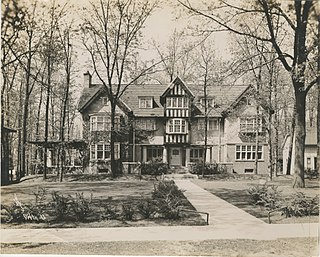
The Delta Upsilon Fraternity House is a fraternity house located at 1331 Hill Street in Ann Arbor, Michigan. It was listed on the National Register of Historic Places in 1995.

The Earl and Virginia Young House, also known as the Young-Sartorette House, stands as a historic residence in Campbell, California. Constructed in 1928, it served as the home for Earl Young, a successful orchard farmer in the Santa Clara Valley, and his family. The house is historically significant in the Tudor Revival architectural style, which gained popularity in the mid-twentieth century. In 1981, the Herz family relocated both the house and garage to prevent them from potential demolition. The Young-Sartorette House was placed on the National Register of Historic Places on January 8, 2009.





















